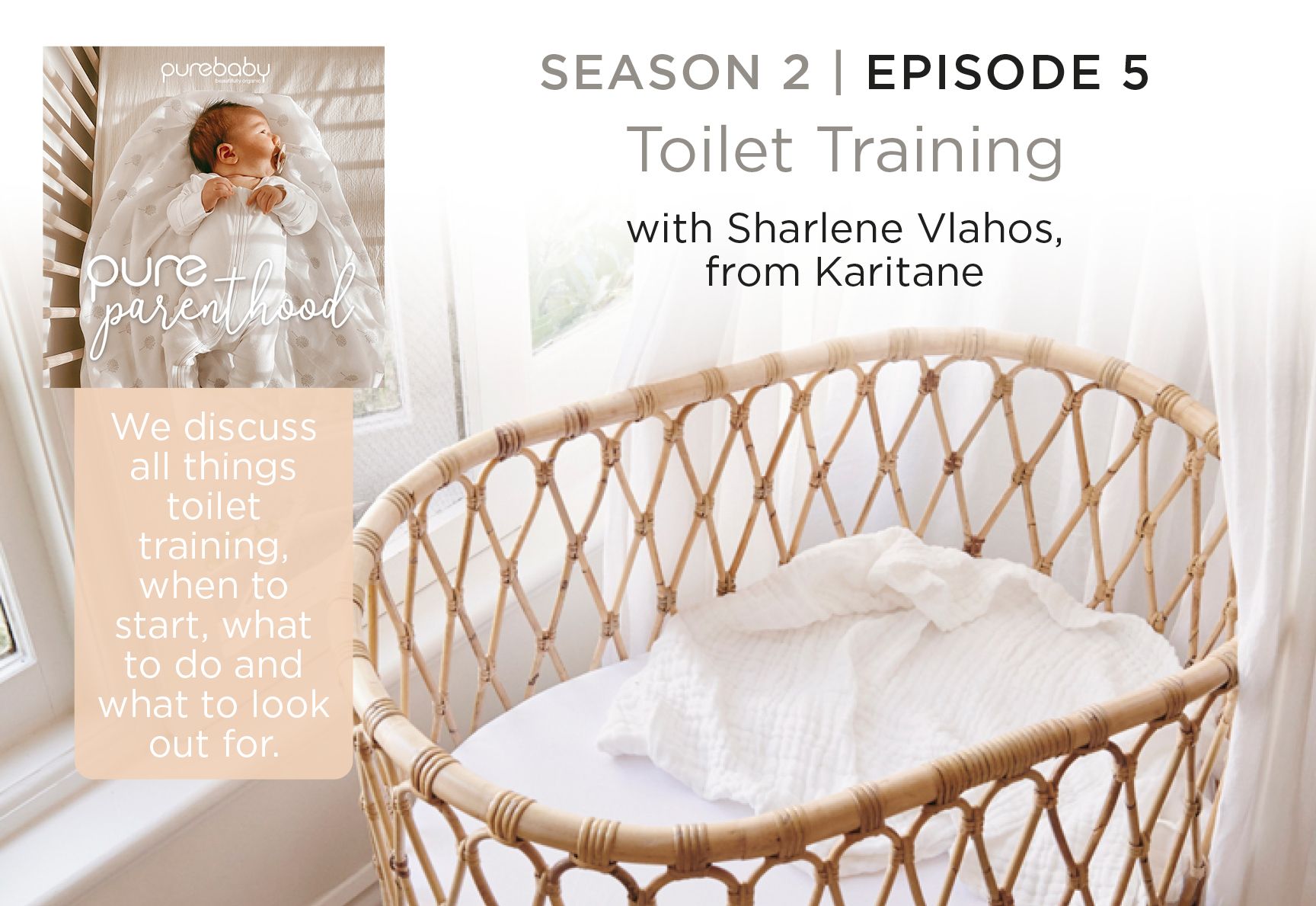
Pure Nutrition: Introducing Baby to Solid Foods
14 min read | 4 October 2020
9 min read | 28 March 2021

When approaching toilet training, it is important to know that this milestone can occur at different times for every child. Whilst age can be a good guide to determine the best time to start, it is equally important to read the signs from your little ones.
Most commonly, children from about 2 years start showing signs of being ready, however some children as young as 18 months can begin showing signs, whilst others aged 3 to 3 and a half years might not.
Walking independently and in the early stages of being able to remove their own clothing.
Waking up dry after a nap or longer periods of having a dry nappy.
Pulling at a wet
nappyand showing discomfort.
Going to hide when doing a poo.
Has an interest in going to the toilet or an interest in others going to the toilet (often mum and dad).
During this time, it’s important to begin engaging with your little one about the toilet. Use common language around using the toilet so that your child learns how to communicate this to you.
When beginning toilet training, it can be helpful to use some simple pieces of equipment to help the transition to the toilet be less daunting for your little ones.
A potty:
This can be helpful as it can be less overwhelming for littles ones rather than navigating the toilet (which is big and oversized for them!)
A foot step and smaller seat
: This can be useful as they become more confident in using the toilet, providing them with extra support for their feet which is important for stability.
Training pants + underwear:
Training pants or pull ups are useful when you are out and about, however it’s best to use underwear when at home, so your child can start to feel the sensation of being wet to allow their brain to link the feelings of needing to go to the toilet.
Children tend to mimic and copy those around them, so one of the key steps in starting the toilet training process is to start going to the bathroom with the door open. That way your little ones can start to get an understanding of the process and what the toilet might be for.
Try talking about the toilet with them, explaining what you are doing and why. There are also some great books around that have been written for children that talk about potty time. This can help to further explain the process whilst still making it fun. You might also decide to buy a potty and have one of their teddies or dolls sitting on the potty with them, this can help to make the process interactive.
The warmer months are more ideal for toilet training as your child tends to have less clothing and layers on, making it easy to quickly race to the bathroom. However, you should never hold back a child that is ready to get going, you will just need to allow a little more time for undressing.
Now that you’re all set up and ready to start toilet training, it’s a good idea to plan some time to be at home. This is because it can be difficult being out and about trying to find a toilet during the training phase. This is only required in the early stages, but it will help to set your little ones up for success.
Start by taking them to the toilet as part of their routine. First thing in the morning, after snacks and meals, before and after a nap.
Encourage them to sit on the toilet. This may not always result in the child following through. After around 3 minutes you can get them up (even if they haven’t done anything).
Give them lots of praise for attempts and success, this is a learning process to build confidence as you work towards independence.
As your child is just learning the “feelings” of needing to go to the toilet, there is a short time to get them to the toilet once they tell you they need to go. This is important to remember as they learn how to hold.
It is also important to remember to remind your child to go to the toilet, as some children can become engrossed in their game and playing and they can forget.
During this time of learning a new skill, accidents are inevitable and set-backs may occur when there are changes happening in your little ones routine. These can include holidays, new babies in the family or if they have been unwell. These are often inevitable, however focus on why they might have occurred and then getting back into your routine, when you can.
If accidents occur, it is important to clean up without any fuss and remember to encourage them to try again next time. Accidents can occur up until primary school ages and is something they will no doubt grow out of. Remember, children thrive on positive language and attention so it is essential to keep this learning experience positive no matter how many setbacks occur, be patient!
Be led by your child when determining when to start toilet training, not by their age.
Take your time, don't rush your little ones
Clean up accidents without fuss or stress
Learning to use the toilet for wee versus poo often happens at different times
Toilet training overnight takes longer to learn and master for children
This article was written by Sharlene Vlahos from Karitane, in conjunction with the Pure Parenthood Podcast, season 2 episode 5. To learn more about Karitane, visit their website.
Sign up to Pure Love Rewards and get $10 off your first online order, earn points every time you shop and more!